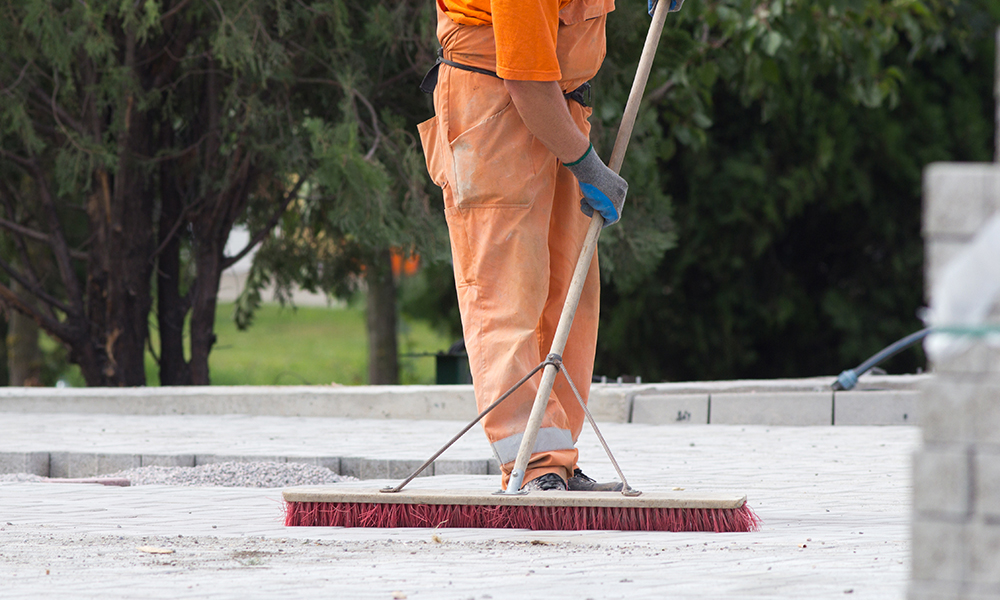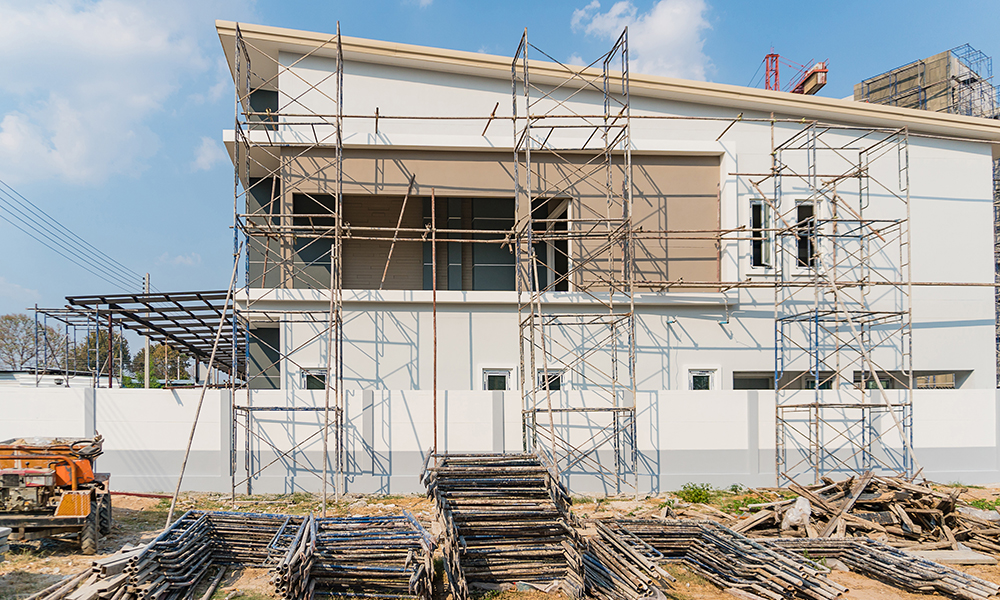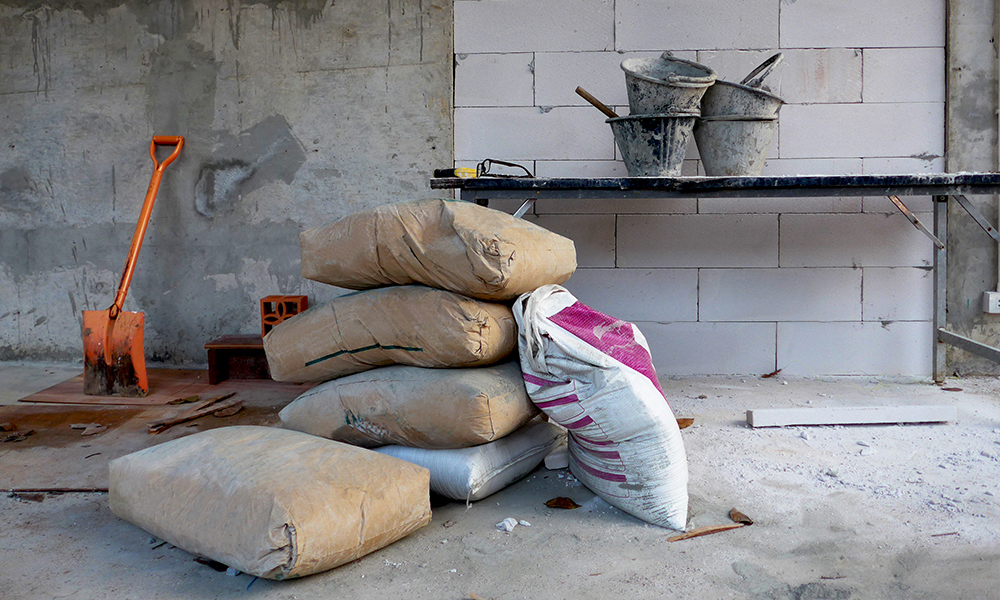An organised construction site is essential for worker safety and efficiency; however, they aren’t usually synonymous with cleanliness, in the sense of being dust and dirt-free. It is crucial to make safety a priority by following some basic housekeeping rules such as storing materials safely; prioritising the disposal of hazardous materials; and managing dust, among others.
Contractors must ensure that a checklist is in place for maintaining daily and weekly tasks and crew members are aware of their responsibilities in keeping the construction site organised through proper training.
MECN takes a look at the top five ways of maintaining a clutter-free workspace and what contractors must ensure on a day-to-day basis
Assign designated areas
Check your work site throughout the day and make sure that your crew clean up as they go along, instead of leaving the cleanup duty to the end of the shift. This reduces the risk of injuries and ensures that your crew can do their jobs efficiently and safely.
At the end of the workday make sure your employees have stored their materials and tools in the right place as well as have a charge sheet with specific tasks for all employees so that everyone is aware of their duties. Additionally, ensure that public areas are part of the daily cleaning and weekly cleaning schedule. Maintain an inspection list that should be reviewed and updated according to the work environment.
Ensure that all access points are clear and marked with signs to and from the job site, including passageways, storerooms, and service rooms. Keep in mind that your employees are responsible for keeping unnecessary combustible materials from accumulating in the work area. These should be stored in covered metal receptacles and daily disposed of, according to OSHA’s standards. It also states that dangers in electrical areas should be reported and work orders must be issued immediately fix them, eliminating fire hazards.
Store materials safely
According to OSHA’s materials handling, storage, use and disposal standard, storage areas should not have an accumulation of materials that present hazards for tripping, fire, explosion or pests. Your workers must also be trained to understand that unused materials should not be stored anywhere at the site, but kept at designated places. Sometimes, they may store a ladder or another item inside an electrical closet, mistakenly blocking a panel creating a fire hazard. They should be informed about the proper procedure, and as the contractor, it is your responsibility to have a final look.
It is recommended that unused materials and equipment be stored out of the workers’ way and that the worksite is kept clean. Storage spaces must be made available to workers close to their place of use, so that workers are encouraged to readily use them, without stretching too far or lifting heavy loads.
Handle hazardous waste
Keeping your construction site tidy will ensure that there are no hidden hazards, and guarantees that everyone on the site is responsible for its general cleanliness. Similar to safety concerns, your workers will find it more challenging to finish their jobs if there is waste matter scattered around. Make sure to clear away all leftover materials into designated piles, bins, and containers.
Furthermore, construction site waste may sometimes be required to be recycled, so enquire about state or regional recycling rules, and separate your waste from the site accordingly. Materials like wood, concrete and metal should be considered for recycling, and properly marked bins should be placed at the site for your workers to use.
Another point to consider is that waste materials must always be kept covered, especially when it could evaporate or spill. Make sure that all your containers and bins are properly sealed and that the right type of container is used to store hazardous waste. Your workers must also be trained in proper waste disposal techniques and ensure that the management of flammable and combustible materials are taken care of properly.
Managing dust
One of the biggest challenges at a construction site is managing the dust, which is a health hazard for your workers and makes the site a dangerous place to work. There are many ways of controlling dust, one of which is using a plastic sheet on the ceiling and floor of the work area. This sheet will help in controlling the dust along with regular cleanup. Ensure that your workers are aware of a regular cleaning schedule so that the dust does not accumulate at the site. Use of a zipper closure to keep the dust controlled in an area is another method, else it can be substituted with the use of alternatives such as drop cloths and painters tape.
Water is another effective mode of controlling the dust particles at a construction site. Just make sure that the site is not too muddy since that could pose a challenge for vehicles and other heavy machinery to access the site. Additionally, making your labourers work in extremely close and confined spaces is a health hazard, and materials and other objects that generate dust must be kept in the open, if possible. According to OSHA’s silica dust compliance guideline, for small entities, don’t allow dry brushing or dry sweeping unless methods such as wet sweeping and HEPA-filtered vacuuming are not feasible. It is also extremely crucial that your workers are protected with the right gear.
Establish a programme
Finally, create a checklist of tasks that must be done by your workers daily before you assign them tasks at the construction site. A good routine from day one will make the final cleanup a relatively easy task. Moreover, regularly doing tasks such as sweeping, mopping, cleaning surfaces, etc., before you leave the construction site will reflect positively on your work ethic before the client.
Incorporation of the 5S system at your jobsite is another helpful tip. It is a housekeeping method invented in Japan for the manufacturing sector and popular among contractors. It involves sorting, straightening, shining, standardising, and sustaining tasks to maintain an orderly work site. It has been noted that when contractors standardise these procedures and sustain them over a period of time, with proper training for workers, it creates a safer, more productive and enjoyable work atmosphere for your staff.
Some of the 5S methodologies to adopt are cleaning up spills and accidents as soon as possible; removing and storing materials in their proper place; fixing any hazards that may cause injuries at site; using his-vis paint and floor rape to maintain safe passage; and making sure that all cords and wires are properly secured and marked visibly.
Most notably, as the contractor, it is your responsibility to set the right tone at the site and provide an open work atmosphere and make sure that your employees are treated right.



